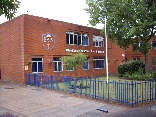
Mike Leader© 2024 All Rights Reserved

A history of the Greenwich Blue Coat Schools



 Home
Greenwich Blue Coat School 1700
St John's National School
Blackheath & Kidbrooke School
Blackheath Bluecoat School
School Archives
Contact
Home
Greenwich Blue Coat School 1700
St John's National School
Blackheath & Kidbrooke School
Blackheath Bluecoat School
School Archives
Contact
Home
Greenwich Blue Coat School 1700
St John's National School
Blackheath & Kidbrooke School
Blackheath Bluecoat School
School Archives
Contact
Home
Greenwich Blue Coat School 1700
St John's National School
Blackheath & Kidbrooke School
Blackheath Bluecoat School
School Archives
Contact
Greenwich Blue Coat Girls’ School was founded as a charity school in 1700. The first entry in the Accounts book is for 24 August 1700. A letter written by “a Gentleman at Greenwich, to his friend at London, concerning the Girls School of that place”, dated 4 May 1724, begins, “Sir, In the Year 1700, several Charitable ladies of this Town, join’d their Subscriptions for setting up a School for Teaching and Cloathing 30 Girls.”
One of the principal founders was Mrs Margaret Flamsteed, wife of the first Astronomer Royal, John Flamsteed, who was a trustee. He had to instruct two boys from Christ’s Hospital School, the first London Blue Coat Charity School, and this may have given his wife the idea for the Greenwich Girls’ Blue Coat School. She was described as “the soul of this movement” and “a lady of ability and prudence”. All of the school accounts from the beginning in 1700 to 1718 are in her handwriting and she subscribed financially to the school until 1722.
The Account Books gives details of “Monys Received From the Gentlewomen and other Contributors” showing a total income of £76, 12 shillings and 6 pence. The total cost of running the school in 1700 was £46, 8 shillings and 6 ¾ pence. On 21 September 1712 the Dean of Peterborough (Dr Kennett) preached a sermon at St Alfege’s Church and a collection was taken on behalf of the school. This began a tradition of “The Annual Sermon” which continued for over 150 years. By 1865 the Annual Sermon was preached on Sunday 10 December at both morning and evening services in four local churches (St Alfege, Trinity, St Mary and Christchurch).
The school had a strong association with St Alfege’s Parish Church, which many of contributors attended. The Benefactions Board in the church notes several gifts to the school including a freehold field called ‘ Harts Mead at Blue Stile’, a bequest from Mrs Elizabeth Dry in 1732.
The school was managed by the Committee of Ladies who took a 50 year lease on a house in London Street,


John Flamsteed (1646-1719)
was the first Astronomer Royal,
appointed by King Charles II in 1675,
the same year that the Royal
Observatory was founded in
Greenwich Park. The King wanted
the study of the position of the stars to help his ships with their navigation at sea. Flamsteed received a salary of £100 per year and had to provide his own instruments. He lived at the Observatory until 1684 when he became the Vicar of Burstow in Surrey. He and his wife, Margaret, were regular worshippers at St Alfege’s Parish Church, Greenwich for over 40 years. Margaret Flamsteed was one of the founders of the Blue Coat Girls’ School. Her husband had to instruct two boys from Christ’s Hospital, the first London Blue Coat Charity School, and this may have influenced his wife to found a charity school for girls

Greenwich (now Greenwich High Road). It was a day
school and the girls were taught to read and write and great emphasis was placed on learning the catechism (a summary of Christian principles in the form of questions and answers) and attending church daily.
The girls were also taught to make their own clothes and other domestic skills. According to the accounts about 100lbs of wool a year was bought in London at a cost of 13 pence per lb. (Note: 1 old penny = ½ new penny. 1lb = approx 500gm/½ Kg). The girls had to spin the wool into yarn which was then taken to a Weaver in London to be woven into cloth. This produced about 560 yards of material (Note: 1 yard or 36 inches = 0.91 metres). This was enough to make about 40 gowns and petticoats. The girls also had to spin flax which was woven to make linen for their shifts, which were a type of underclothes. A note in the accounts book says:
Each Girl is allow'd six Shifts in four Years,
and all their Linen is made up by themselves.
They had to make linen aprons and caps and had to line the bodies and sleeves of their gowns. They made Red under petticoats and had to knit gloves and blue stockings, as well as making blue Riding Hoods for wet weather.
| Resources |
| History at a glance |
| Find your way Page 1 |
| Find your way Page 2 |
| Find your way Page 3 |
| Find your way Page 4 |
| 1730-1748 |
| 1753-1866 |
| 1871-1908 |
| 1913 Page 1 |
| 1913 Page 2 |
| 1913 Page 3 |
| 1926-1943 |
| 1947-1951 |
| 1952-1959 |
| Blackheath & Kidbrook Schools 1932-1939 |
| Bluecoat Fire |
| Fire! Report (1) |
| Fire! Report (2) |
| Information Centre Open Afternoon Photosheet |
| 2012 St Alfege's Celebration Page 2 |
| 2012 St Alfege's Celebration Page 3 |
| 2012 St Alfege's Celebration Page 4 |
| Resources |
| History at a glance |
| Find your way Page 1 |
| Find your way Page 2 |
| Find your way Page 3 |
| Find your way Page 4 |
| 1730-1748 |
| 1753-1866 |
| 1871-1908 |
| 1913 Page 1 |
| 1913 Page 2 |
| 1913 Page 3 |
| 1926-1943 |
| 1947-1951 |
| 1952-1959 |
| Blackheath & Kidbrook Schools 1932-1939 |
| Bluecoat Fire |
| Fire! Report (1) |
| Fire! Report (2) |
| Information Centre Open Afternoon Photosheet |
| 2012 St Alfege's Celebration Page 2 |
| 2012 St Alfege's Celebration Page 3 |
| 2012 St Alfege's Celebration Page 4 |